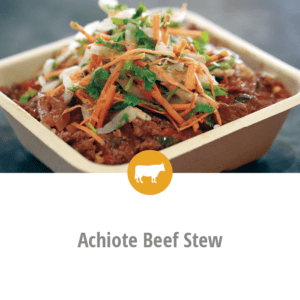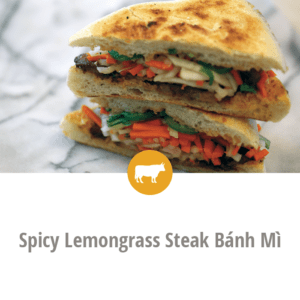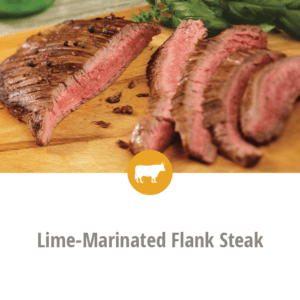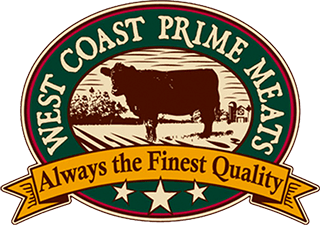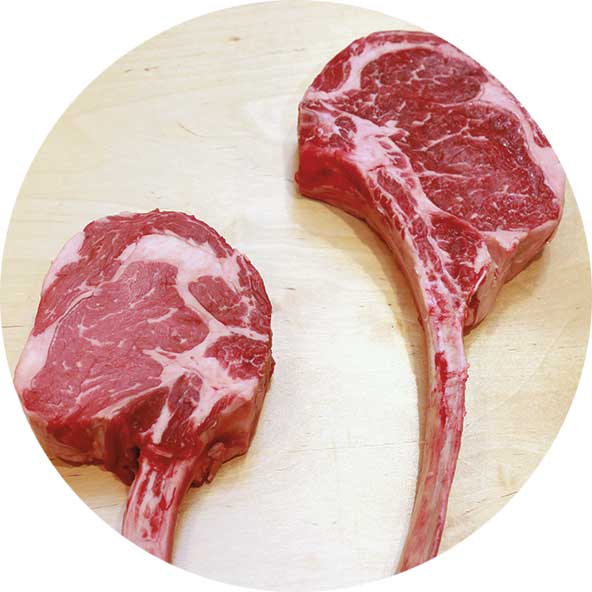
Ever wonder where steaks get their names? Why a New York? What’s a filet?
Beef carcasses in the United States break down into seven primal cuts: chuck, rib, loin, round, brisket, plate and flank. The middle primals—the rib and loin—are where the majority of steak cuts originate, because that section of the animal yields more tender, marbled meat.
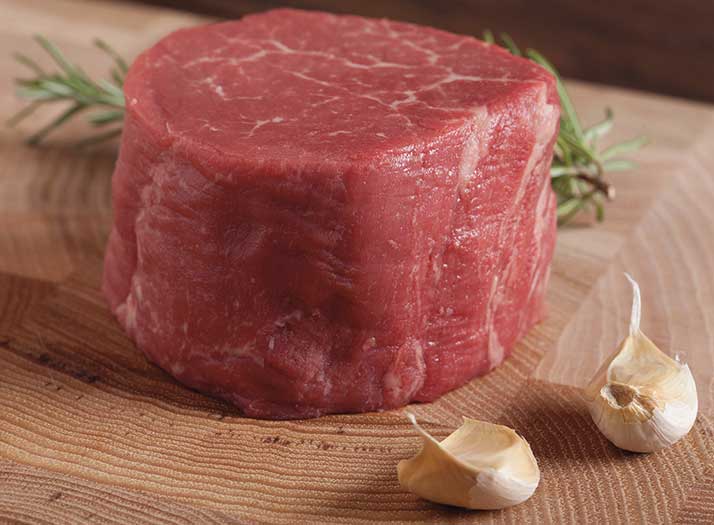
Tenderloin/Filet
In French, the word filet means ribbon, and the filets—two per animal—run like ribbons down the base of the spine. These two muscles on the animal move very little and, consequently, remain tender, hence, the tenderloin. Meat men sometimes refer to these as pismo steaks. That has nothing to do with geography or clams; it is shorthand for psoas major, the Latin name for the muscle.
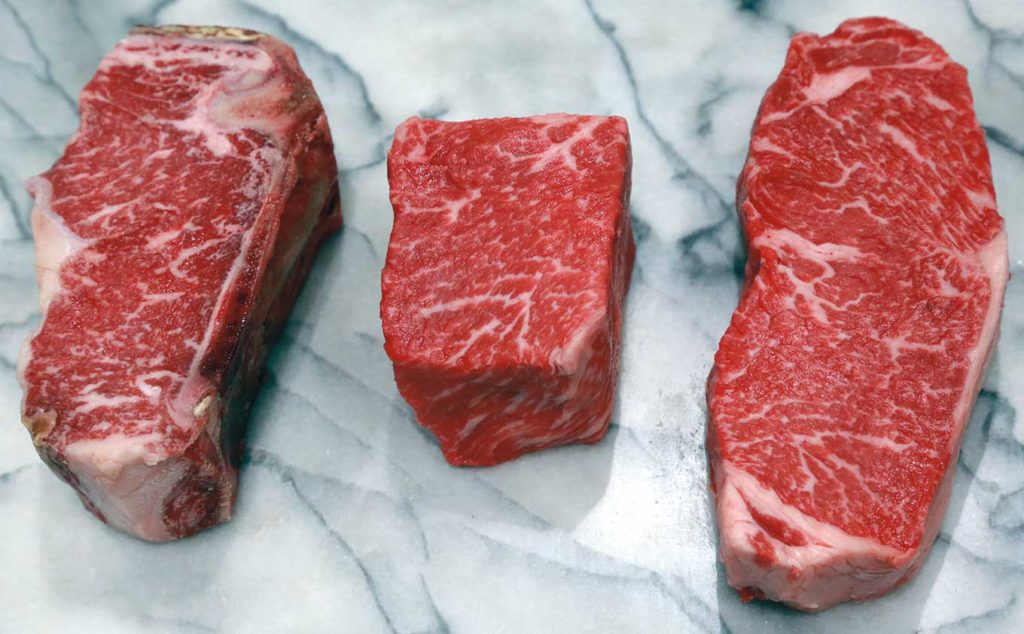
Dry-aged (left), Block-cut (center), Wet-aged (right)
New York
The New York is a strip steak from the short loin, located next to the top of the tenderloin. Speculation is that the Kansas City strip steak changed its label to New York through the cut’s association with Delmonico’s restaurant in the Big Apple. The strip steak popularized near the stockyards of Kansas City traditionally is a bone-in cut; New York strips often are boneless.
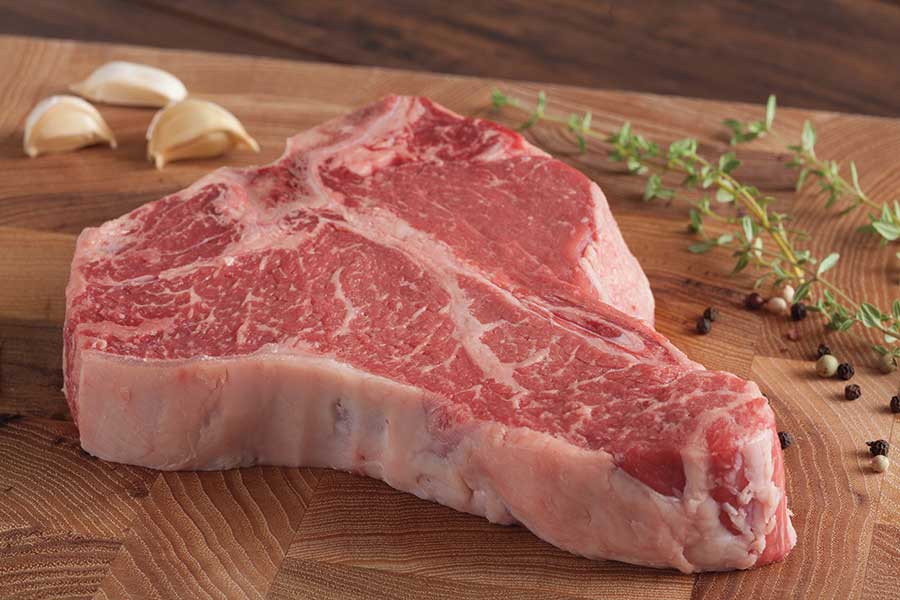
Porterhouse
T-bones and porterhouse steaks sit next to each other on the muscles and contain both the New York and the filet. The porterhouse comes from the section further back than the T-bone, so the tenderloin is larger. Both have a distinctive T-shaped bone. As for the name porterhouse, food historians don’t seem to agree. Some attribute it to a New York tavern that served porter and steak, others to a Cambridge, Massachusetts, hotelier named Zachariah Porter. Most claims date back to the early nineteenth century, which tells us this steak will not go out of popularity any time soon.
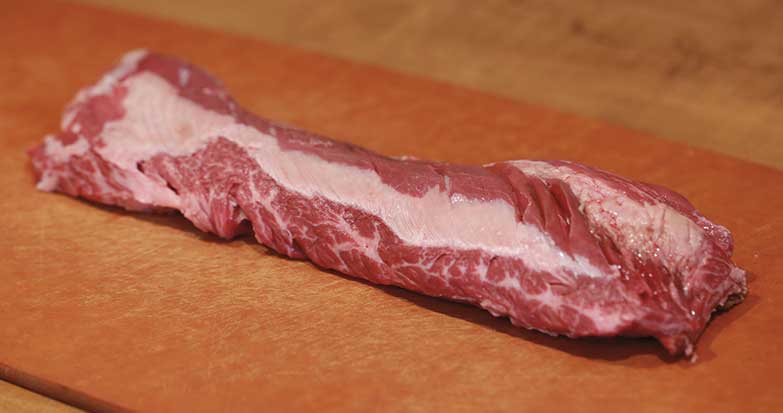
Hanger Steak
This cut is from the lower sirloin and is the neighbor, anatomically and texturally, of the flank steak. The piece hangs off the diaphragm of the sirloin; there is only one per animal. It earned the name of butcher’s steak back in the days when mom-and-pop meat markets abounded; this was the flavorful cut the butcher would take home.
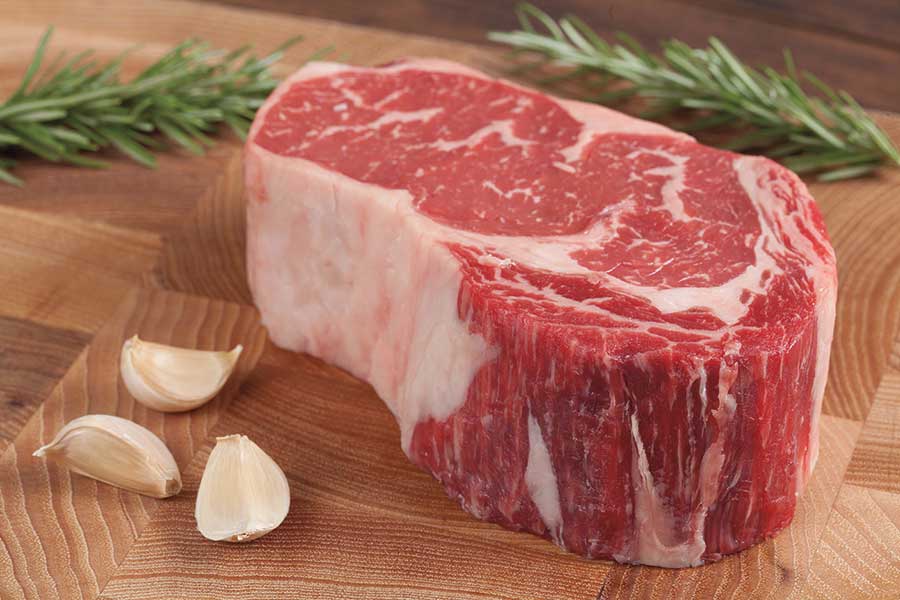
Ribeye
Not so much of a labeling mystery when you look at the cut, the ribeye is one of the most flavorful of all steaks, bone-in or boneless. The loin has an eye-shaped piece of meat surrounded by a fat cap. This part of the long loin muscle sits further forward than the short loin and may not be as tender as the New York or the filet but is the cut used to grade the animal, based on the fat marbling.
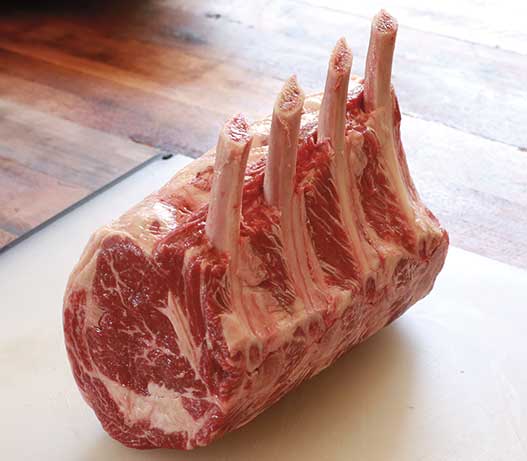
A four-bone prime rib roast
Prime Rib
The word prime here does not refer to a meat grade. It refers to the rib location, numbers six through twelve on the primal. Standing rib roasts, popular on holidays, usually contain all seven ribs, although you can request smaller roasts. The two ribs closest to the chuck end may be cut separately and sold as rib steaks, also known as bone-in ribeye steaks. The prime rib as a rule is a roast cut and not an individual steak; ribeyes, on the other hand, are cut individually to grill or sauté.
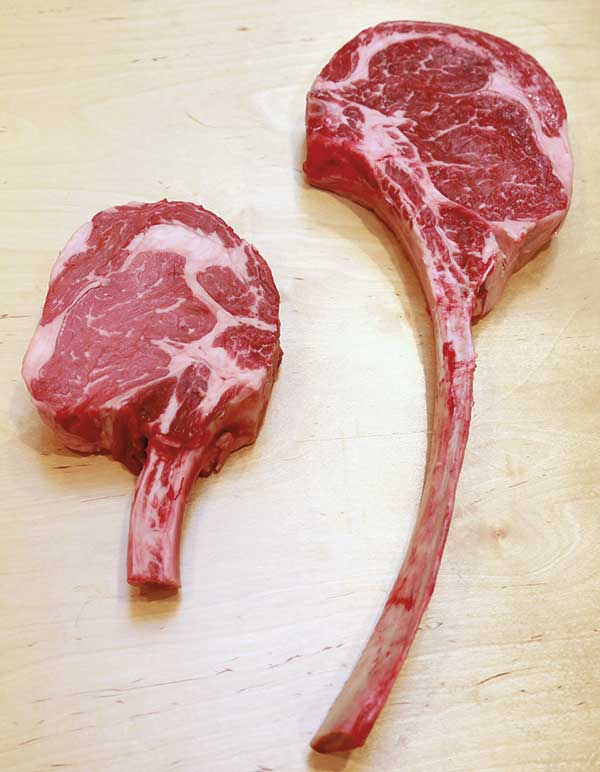
Rib chop (left); Tomahawk (right)
Tomahawk Ribeye
When the rib bone is left intact and French-cut (removing the fat and sinew down to the eye), the ribeye resembles a tomahawk.
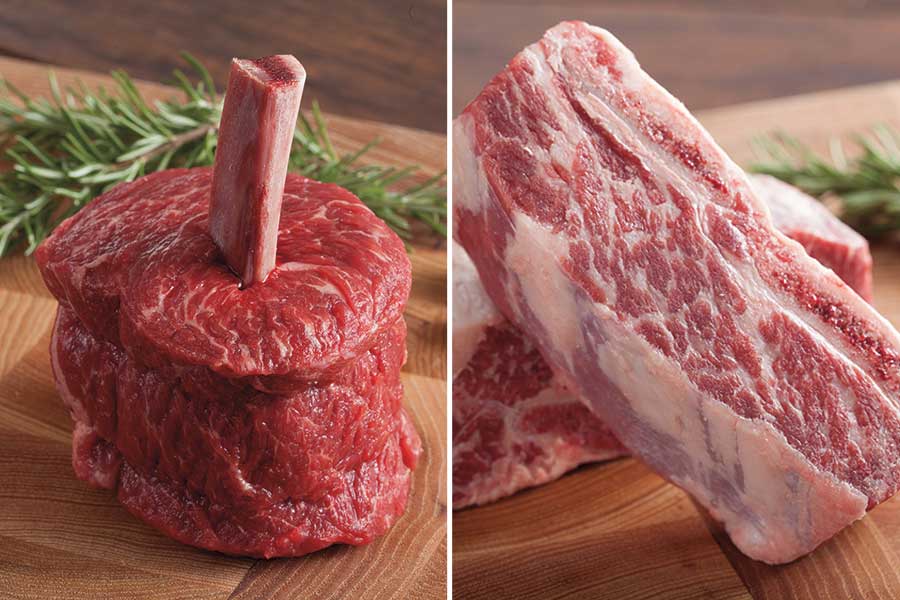
Osso bucco (left), Double-bone cross-cut (right)
Short Ribs
The short rib comes in many variations. Depending on the cut, the short rib falls in the rib or the plate primal. Two popular options are rolled and tied osso buco style (a) and double-bone cross-cut (b). Galbi, a popular Korean and Japanese barbecue cut, is a thin-sliced, three-rib, cross-cut short rib. Boneless short ribs are not a rib cut, they are from the chuck primal.
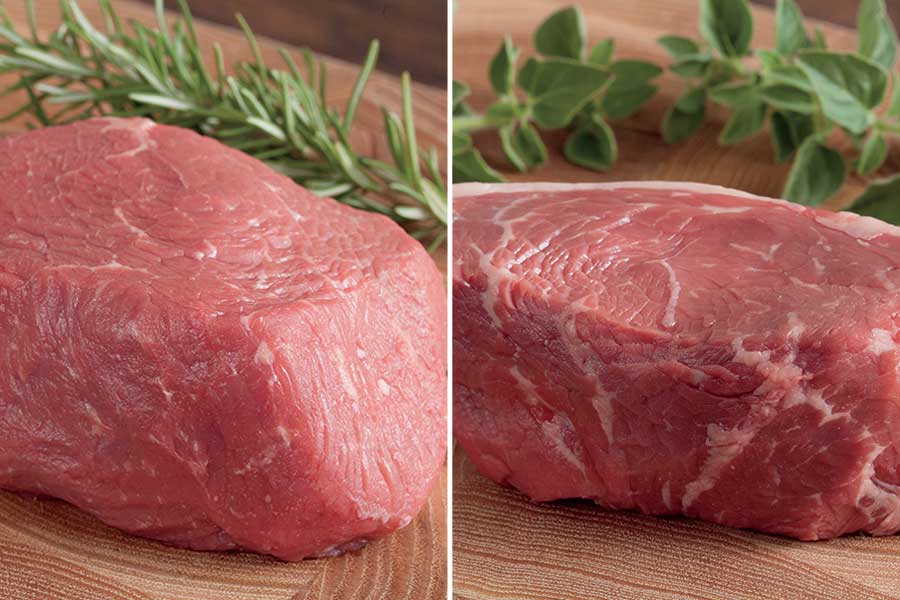
Baseball cut (left); True coulotte cut (right)
Coulotte
The coulotte is a generously marbled boneless steak cut from the top sirloin cap. When the cut comes from the center muscle, it is called a baseball cut, named for its round, baseball-like shape. The coulotte’s close relative in flavor, from the bottom sirloin, is the tri-tip.
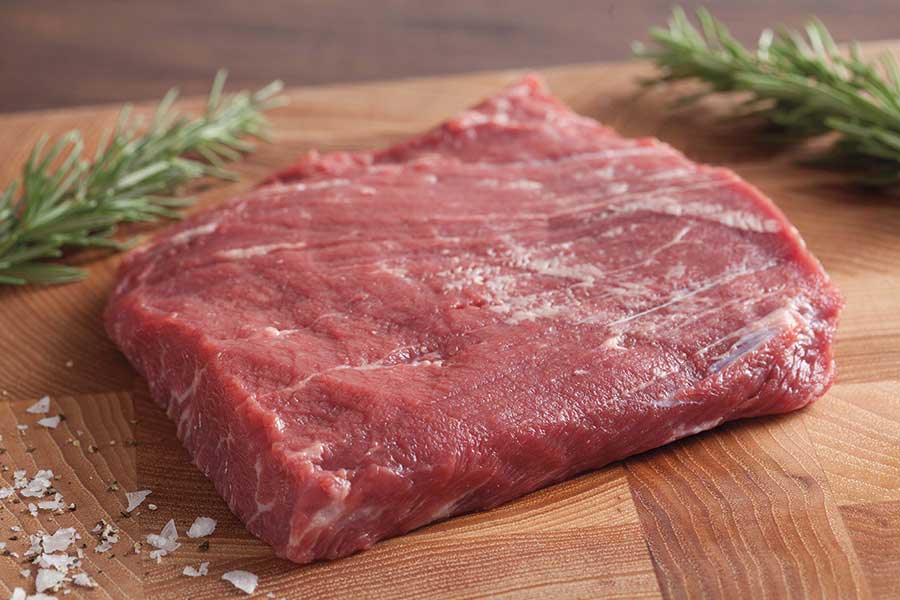
Flat Iron Steak
This name seems to have nothing to do with the Flat Iron building in New York nor its triangular flatiron shape. This oblong cut comes from the chuck portion, sometimes labeled as a top blade roast. The section cut out for a flat iron steak has a tough—or iron-hard—flat strip of gristle sitting alongside it that must be removed before cooking. Once stripped of that gristly plate, it is the second most tender cut of steak, after the tenderloin.
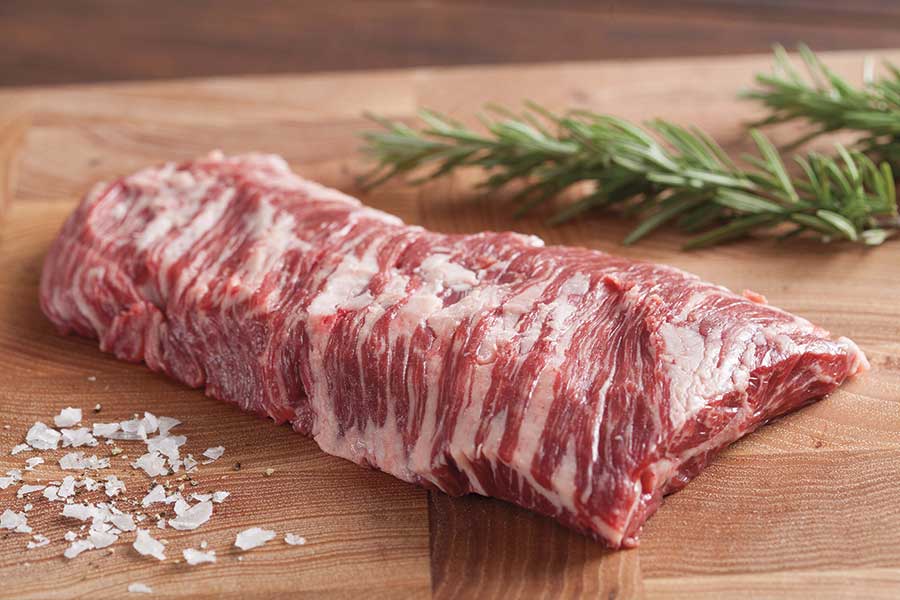
Skirt Steak
Known to Mexican restaurateurs as the arrachera, this long, fat-streaked, skirt-shaped flap comes from the plate and can be a tough customer. The smaller outside skirt steak, shown here, is the diaphragm; the inside skirt is the transverse abdominal muscle. Good thing cows don’t do sit-ups! Tenderized with a marinade or a meat mallet, it works beautifully for recipes calling for grilled meat.
Beef Recipes
